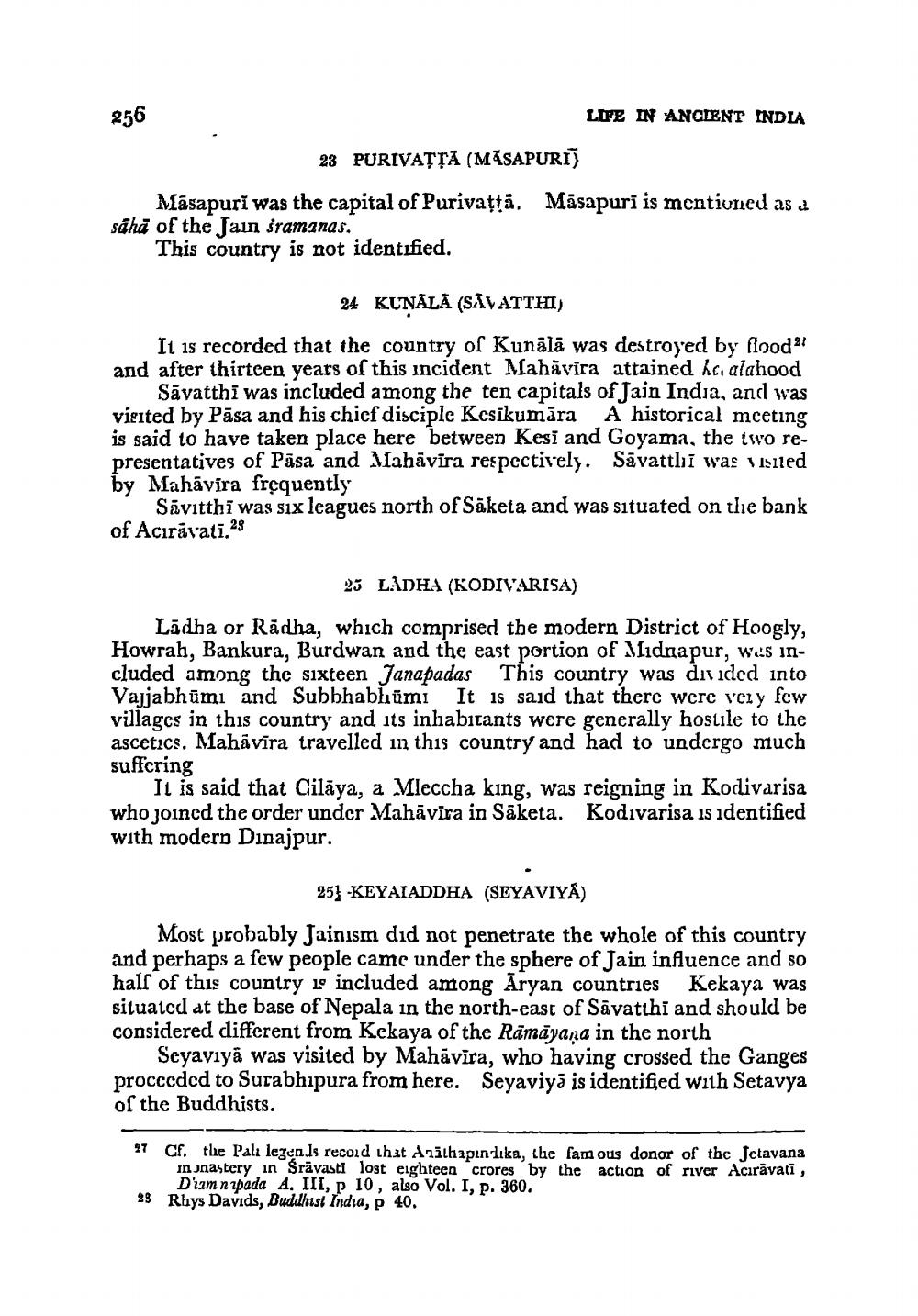________________
256
LIFE IN ANCIENT INDIA
23 PURIVAȚIA (MĀSAPURI)
Masapuri was the capital of Purivaṭṭā. Māsapuri is mentioned as a saha of the Jain sramanas.
This country is not identified.
24 KUNĀLA(SÂVATTHI)
It is recorded that the country of Kunālā was destroyed by flood"! and after thirteen years of this incident Mahavira attained he alahood Sāvatthi was included among the ten capitals of Jain India, and was visited by Pāsa and his chief disciple Kesikumara A historical meeting is said to have taken place here between Kesi and Goyama, the two representatives of Pasa and Mahāvīra respectively. Savatthi was visited by Mahavira frequently
Săvitthi was six leagues north of Saketa and was situated on the bank of Acıravati."
28
25 LADHA (KODIVARISA)
Ladha or Radha, which comprised the modern District of Hoogly, Howrah, Bankura, Burdwan and the east portion of Midnapur, was included among the sixteen Janapadas This country was divided into Vajjabhumi and Subbhabhumi It is said that there were very few villages in this country and its inhabitants were generally hostile to the ascetics. Mahāvīra travelled in this country and had to undergo much suffering
It is said that Cilaya, a Mleccha king, was reigning in Kodivarisa who joined the order under Mahāvīra in Saketa. Kodivarisa is identified with modern Dinajpur.
25} -KEYAIADDHA (SEYAVIYA)
Most probably Jainism did not penetrate the whole of this country and perhaps a few people came under the sphere of Jain influence and so half of this country is included among Aryan countries Kekaya was situated at the base of Nepala in the north-east of Savatthi and should be considered different from Kekaya of the Rāmāyaṇa in the north
Seyaviya was visited by Mahāvīra, who having crossed the Ganges proceeded to Surabhipura from here. Seyaviya is identified with Setavya of the Buddhists.
27
Cf. the Pali legends record that Anithapindika, the famous donor of the Jetavana monastery in Srävasti lost eighteen crores by the action of river Acıravati, Diam napada A. III, p 10, also Vol. I, p. 360.
23 Rhys Davids, Buddhist India, p 40.




